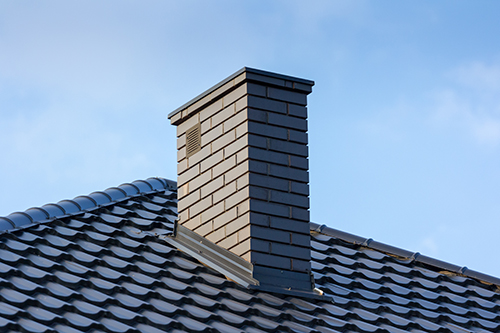How do I know if my chimney is safe?

Here’s what to look for to ensure your fireplace is safe and up-to-snuff.
How do you keep your fireplace safe? The best tools you have are your eyes.
With regular visual inspections both inside your home and out, you’ll make sure your fireplace is in good shape for the burning season.
Checking From the Outside
Examine the chimney to make sure a chimney cap is present and in good repair. The metal cap keeps animals, rain, and snow out of the chimney while acting as a spark arrester that prevents hot embers from landing on your roofing.
If you have a multi-story home or a steep roof, play it safe and use a pair of binoculars to check the chimney cap from the ground.
While you’re at it, make sure:
- There’s no bird's nest or debris buildup on the cap.
- There are no tree limbs above or near the chimney.
- The mortar and bricks on the chimney aren’t crumbling or missing.
- The chimney rises at least 2 feet above where it exits the roof.
- The chimney crown -- the sloping cement shoulders at the top of the chimney -- is beveled, which helps air flow.
- The flue liner is visible above the chimney crown.
- The chimney is plumb and not leaning to one side or the other.
- The roof flashing is tight against the chimney.
If you spot anything amiss, call a licensed chimney professional or mason to remedy the problem. For pricey jobs, make sure to get a second estimate.
Looking Inside Your Home
With a flashlight, inspect the flue damper to make sure it opens, closes, and seals properly.
“If the damper doesn't seal well, you’ll lose a tremendous amount of heat from the home when the fireplace isn’t in use,” explains Gary Spolar, a licensed sweep and owner of Century Chimney in northeast Ohio.
With the damper open, check the flue for combustible material such as animal nests or other foreign objects. You should be able to see daylight at the top.
Inspect the fireplace surround, hearth, and firebox to make sure there are no cracked bricks or missing mortar. Damage inside the firebox is serious -- have a professional fireplace and chimney inspection. An inspection costs $79-$500.
Also, check for obvious signs of moisture inside the firebox, which could mean a faulty cap.
Inspecting a Gas-Burning Fireplace
We enjoy gas fireplaces because they’re low-maintenance -- but that doesn't mean they’re no-maintenance. You should:
- Inspect the glass doors for cracks or latch issues.
- Check that gas logs are in the proper position.
- Turn gas off at the shut-off valve and test the igniter.
- Ignite the fire and look for clogged burner holes. If present, turn off gas and clear obstructions with a pin or needle.
by Douglas Trattner
Posted In: Masonry -

